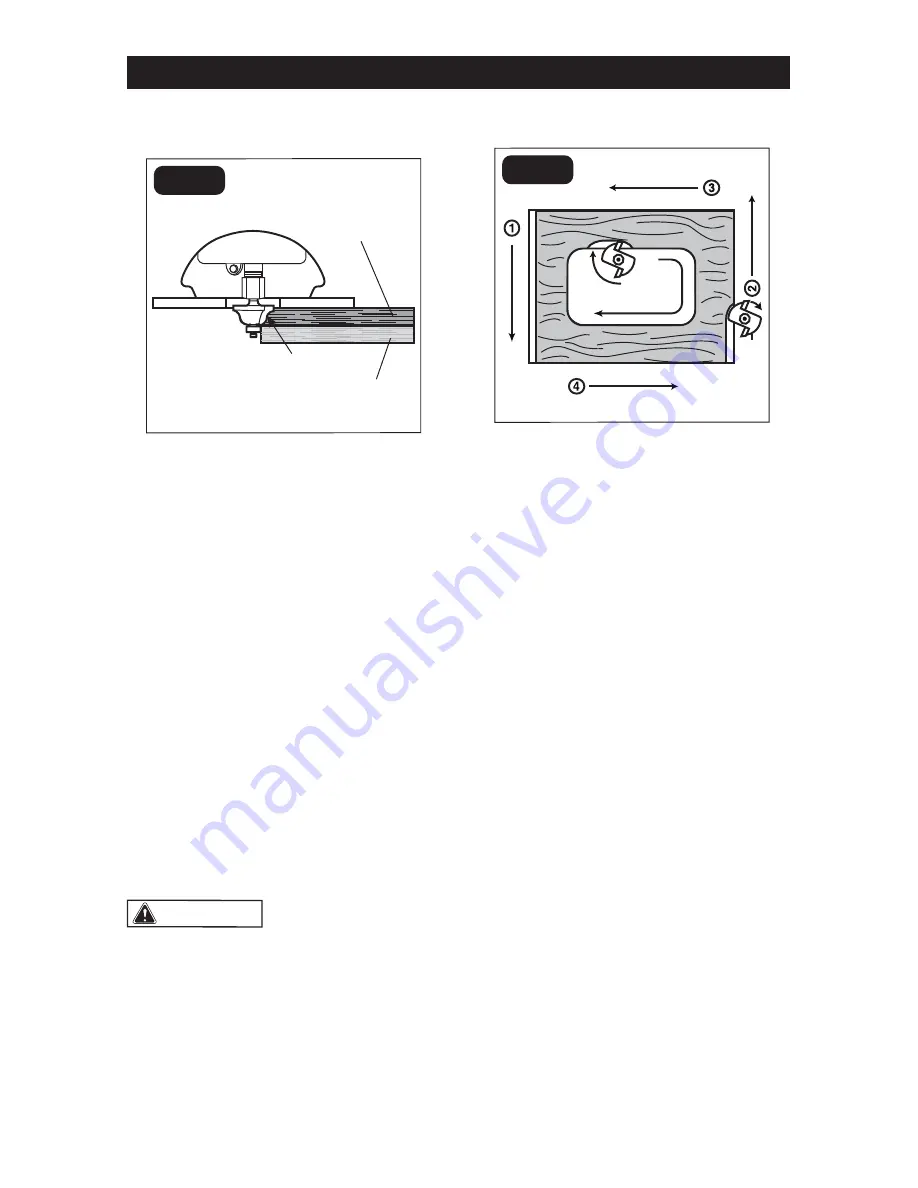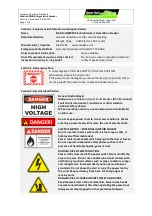
Page 17
WHOLE EDGE SHAPING
(FIG. 16)
FIG. 16
Work piece
Guide board
WHOLE EDGE SHAPING
Whole edge of
workpiece
If the workpiece is too thin or the bit is set so
low that there will be no uncut edge against
which to ride the pilot, an extra board must
be placed under the workpiece to act as
a guide (FIG. 16). This “guide” board must
have exactly the same contour - straight
or curved - as the workpiece edge. If it is
positioned so that its edge is flush with the
workpiece edge, the bit will make a full cut
(in as far as the bit radius). On the other
hand, if the guide is positioned so that it
extends beyond the edge of the workpiece),
the bit will make less than a full cut - which
will alter the shape of the finished edge.
NOTICE: The size (diameter) of the pilot
that is used determines the maximum
cut width that can be made with the pilot
against the workpiece edge. (The small
pilot exposes the entire bit; the large one
reduces this amount by 1/16”.) Any of the
piloted cutter bits can be used without a
pilot for edge shaping with guides.
WARNING:
Always securely clamp
your workpiece and keep a firm grip on
the router base with both hands at all
times. Failure to do so could result in
loss of control causing possible serious
personal injury.
OPERATION
FEEDING THE ROUTER (FIG. 17)
FIG. 17
Router feed direction
Router feed
direction
The secrets to professional routing are a
careful set-up for the cut, selecting the
proper depth of cut, knowing how the cutter
bit reacts in your workpiece, and the rate
and direction of feed of the router.
DIRECTION OF
FEED - EXTERNAL CUTS (FIG. 17)
The cutter bit rotates clockwise. (When
installed on a router table, the rotation is
counterclockwise.) Feeding the bit from left
to right will cause the bit to pull the router
towards the workpiece (FIG. 17). If the router
is fed in the opposite direction (right to left),
the rotating force of the cutter bit will tend to
throw the bit away from the workpiece.
This is called “Climb-Cutting”. “Climb-
Cutting” may cause loss of control, possibly
resulting in personal injury. When “Climb-
Cutting” is required (e.g. backing around
a corner), exercise extreme caution to
maintain control of the router. The high
speed of the cutter bit during a proper
feeding operation (left to right), results in
very little kickback under normal conditions.
However, if the cutter bit strikes a knot,
an area of hard grain, or a foreign object,
“Kickback” may result. Kickback may
damage your workpiece and could cause
you to lose control of the router, possibly
causing personal injury. Kickback is always
in the opposite direction of the clockwise
cutter bit rotation, or counterclockwise. To
guard against and help prevent Kickback,







































